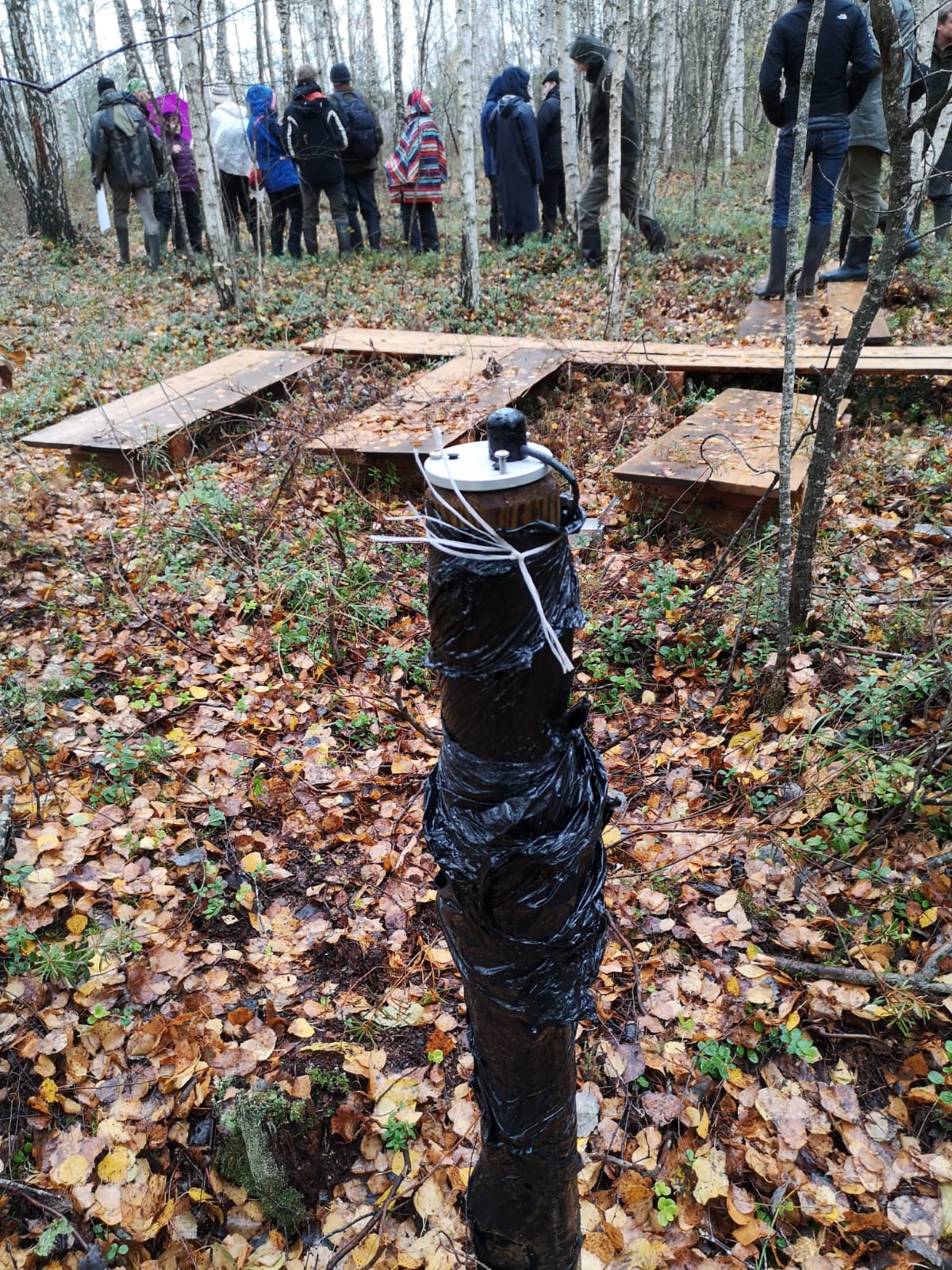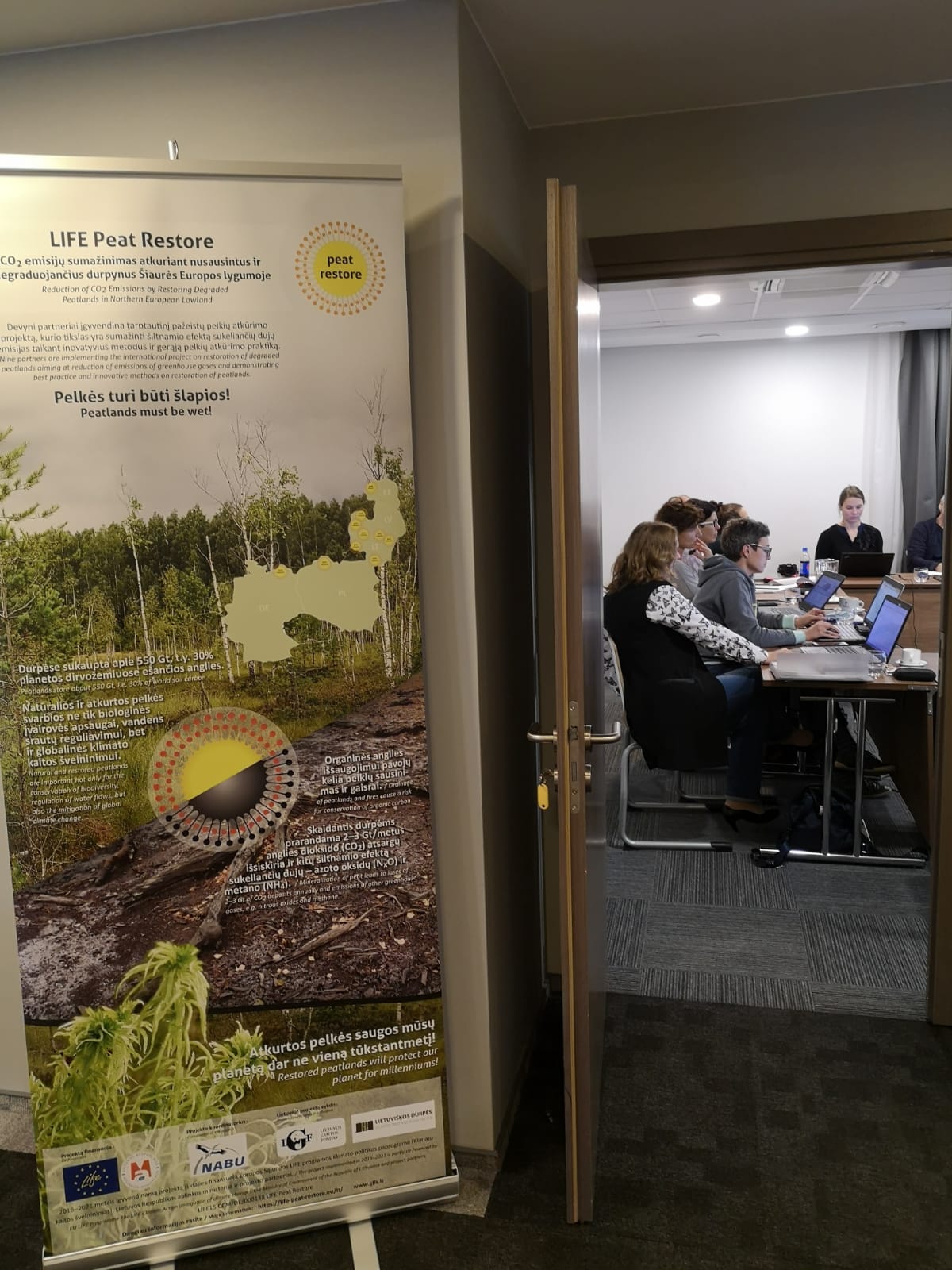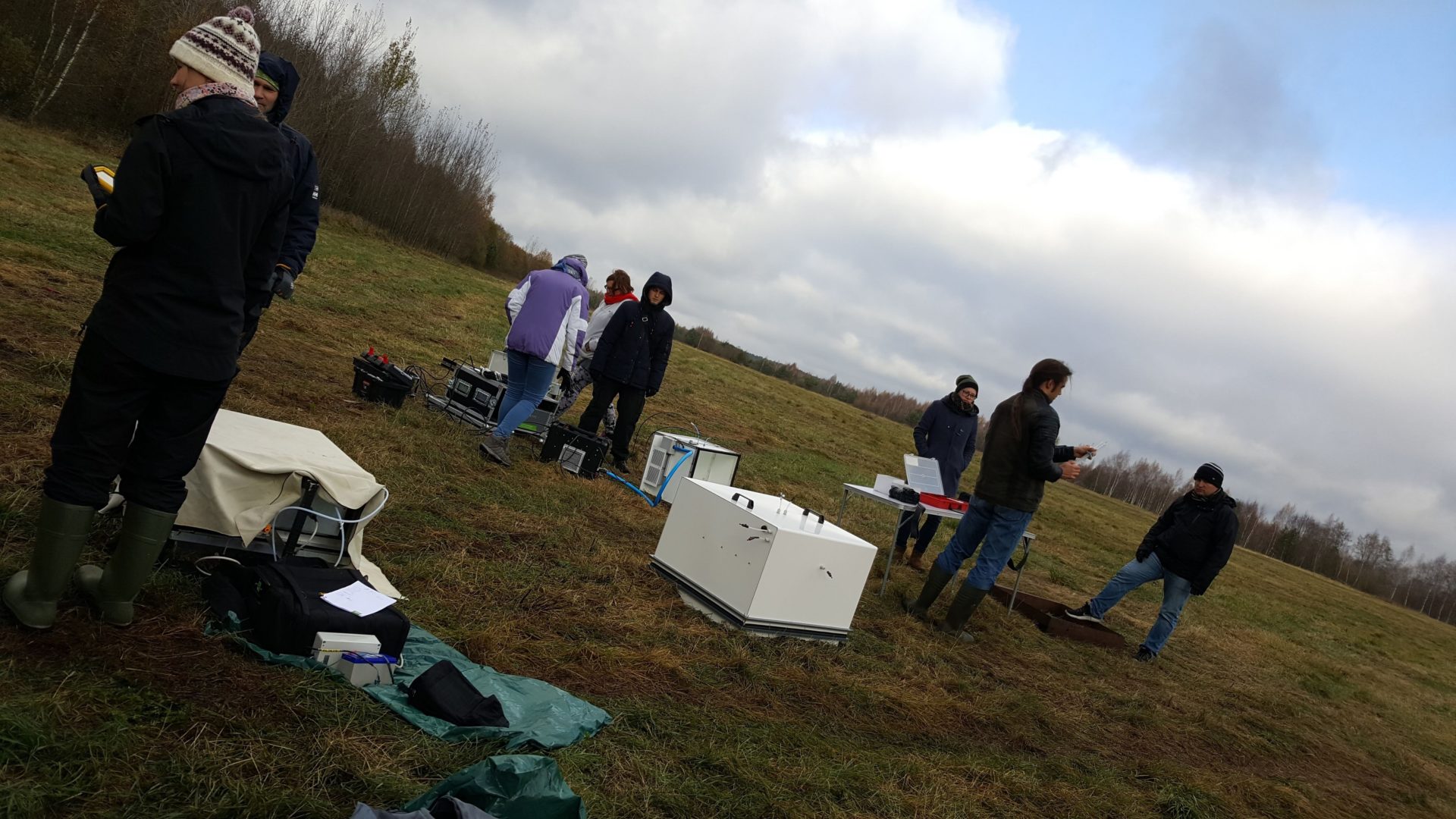LIFE Peat Restore made great progress in 2018. Vegetation and hydrological monitoring has been established on all project sites, including the instalment of automatic water loggers and wells to measure water levels on monitoring plots.
The data from monitoring is a key component for the calculations of greenhouse gas (GHG) emissions, as well as the global warming potential (GWP), using the GEST approach (for more detailed explanation of the GEST technique: https://life-peat-restore.eu/en/greenhouse-gas-monitoring-stations-installed-project-areas-latvia/). In addition to the GEST estimations, LIFE Peat Restore began the direct GHG measurements in 2018, which uses closed transparent and non-transparent chambers (see previous link).
LIFE Peat Restore partners have spent most of the summer of 2017 and 2018 surveying and mapping vegetation forms on the field. As a result, GEST types have been identified along with the creation of GEST maps for all of the project sites.

Building on the hard work of the partners during the vegetation periods, key beneficiaries of LIFE Peat Restore – University of Latvia, NABU, Tallinn University, Lithuanian Fund for Nature (LFN) and Klub Przyrodników – met in Vilnius from October 22 to 26, 2018. The meeting was kindly hosted by LFN.
There were lively
discussions throughout the week. Significant time was dedicated to the GEST
types identified in each site, whereby each partner presented the results of
their efforts over the summer with a summary of the GEST types and initial
calculations of GHG emissions based on the GEST-catalogue. Particular attention
was given to carbon sequestration from trees and forests, as the implications
for calculations are considerable. Addressing this issue is important to avoid
significant gaps or variations on the emissions data obtained.

The meeting was crucial to reach a common understanding of the parameters for calculating the GHG flux for each site. Based on the data obtained, the balance for all sites will be calculated considering different scenarios:
A business as usual scenario, whereby current degraded peatlands are not restored. In this case, emissions will likely remain relatively constant on the time period of 30 to 50 years. A restoration scenario, whereby restoration measures are actually implemented. Thus, it is expected that current emissions from the project sites will likely reduce on the time period of 30 to 50 years, as a result of the restoration measures. LIFE Peat Restore is presently working on finalising the calculations for the first GHG balance scenarios for each project site. Soon, the first calculations will be posted.
Furthermore, the meeting in Vilnius was a great opportunity to conduct a workshop to test on the field the different measurement systems employed in the LIFE Peat Restore project. Technicians from Germany, Latvia and Estonia met for the first time to test and calibrate the different instruments used.



